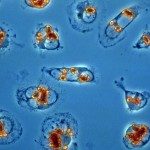Lien vers Pubmed [PMID] – 33148491
Lien DOI – S0223-5234(20)30928-410.1016/j.ejmech.2020.112956
Eur J Med Chem 2021 Jan; 210(): 112956
Leishmaniasis constitutes a severe public health problem, with an estimated prevalence of 12 million cases. This potentially fatal disease has a worldwide distribution and in 2012, the fatal Visceral Leishmaniasis (VL) was declared as new emerging disease in Europe, mainly due to global warming, with expected important public health impact. The available treatments are toxic, costly or lead to parasite resistance, thus there is an urgent need for new drugs with new mechanism of action. Previously, we reported the discovery of CTN1122, a potent imidazo[1,2-a]pyrazine-based antileishmanial hit compound targeting L-CK1.2 at low micromolar ranges. Here, we described structurally related, safe and selective compounds endowed with antiparasitic properties, better than miltefosine, the reference therapy by oral route. L-CK1.2 homology model gave the first structural explanations of the role of 4-pyridyl (CTN1122) and 2-aminopyrimidin-4-yl (compound 21) moieties, at the position 3 of the central core, in the low micromolar to nanomolar L-CK1.2 inhibition, whereas N-methylpyrazole derivative 11 remained inactive against the parasite kinase.




